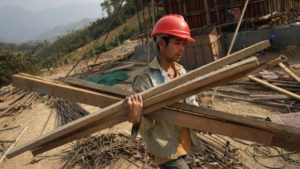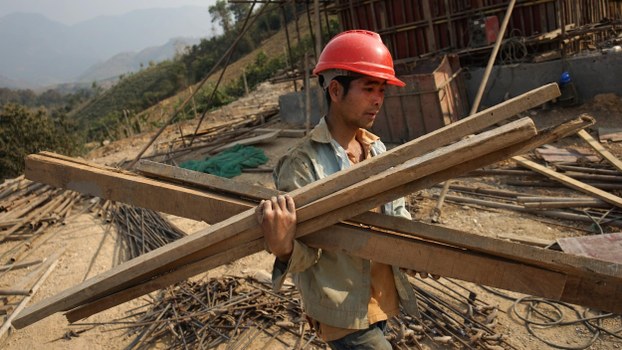
Coronavirus Delays Construction on 90 percent complete Lao-China Railway
The nearly-finished railway project that would connect landlocked Laos with China is facing construction delays due to manpower shortages resulting from the coronavirus crisis, according to local government officials.
Laos, which reported its first two confirmed cases of the deadly virus only late last month, had been spared from the effects of the global pandemic for most of February and March, but recently Lao Prime Minister Thongloun Sisoulith ordered a limit on the numbers of workers, requiring that nonessential workers remain home.
In some industries this has led to a complete shutdown, but in the construction sector, it has resulted in projects continuing with fewer laborers on hand.
Local government officials warn that the limitations could delay the project, which is supposed to be completed by Dec. 2021.
“The virus crisis has made most of the technicians and laborers stop working as they are complying with the prime minister’s orders, which say that all sectors must limit their workforces,” a Luang Prabang provincial official told RFA’s Lao Service Monday.
“This crisis will delay the project a little bit,” the official said.
The official said that if the crisis becomes a long and drawn-out affair, the project might not be finished by the deadline, but he added that the owner has vowed to try hard to complete the project on time.
RFA attempted to contact an official in Vientiane from the Chinese company in charge of the project, but was unsuccessful.
Sections of the railway under construction in Vientiane province are also experiencing delays, a local official told RFA on the same day.
“Now the workforce is reduced. They still work but in fewer numbers,” the he said.
“Only one truck carrying four or five workers can go to each construction site, so things are slower now,” he added.
The Vientiane official said that most of the laborers still working on the project in the province are essential personnel and that they are taking precautions such as wearing facemasks while on the job, as recommended by their employer.
They also wash their hands with detergent prior to returning to their workers’ quarters to prevent the possible spread of disease to workers from other sites, and they are regularly given health checks by the company.
Compensation delayed
Meanwhile, construction is complete on a rail bridge in Oudomxay province, but villagers who lost farmland to the project are demanding compensation.
One of the affected villagers told RFA Monday, “They only paid people if the railway passes through their land, but the land surrounding the rails, which we use to grow crops and teak wood for income, [is now unusable].”
“They didn’t pay us for that yet, and there are more than 10 affected families,” he said.
The villager added that those seeking compensation attempted to ask authorities about when they will be paid, but have received no answer.
RFA contacted a relevant local official who said that payment of compensation is still being considered, but the official declined to say when and how much in compensation the villagers can expect.
The bridge, which would carry trains over the Mekong river, connects Oudomxay’s Nga district with Luang Prabang’s Chompeth district. Affected villagers in Chompeth received compensation but their cross-river neighbors in Nga have been petitioning the local government for months to no avail.
The entire Lao-China railway project is 90 percent complete. It has been touted as a benefit to the Lao economy because it will lower the cost of exports and consumer goods while boosting socioeconomic development in the impoverished nation of nearly 7 million people.
Reported by RFA’s Lao Service. Translated by Sidney Khotpanya. Written in English by Eugnee Whong.
Source: https://www.rfa.org/english/news/laos/lao-china-railway-04072020150320.html



